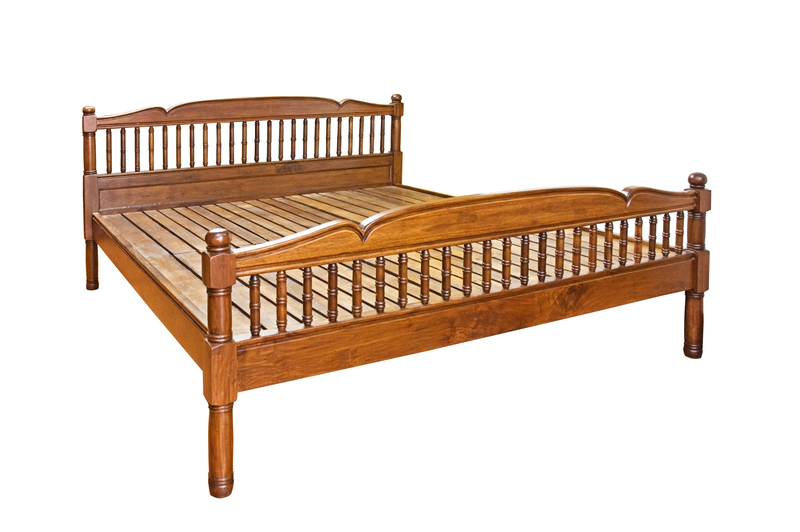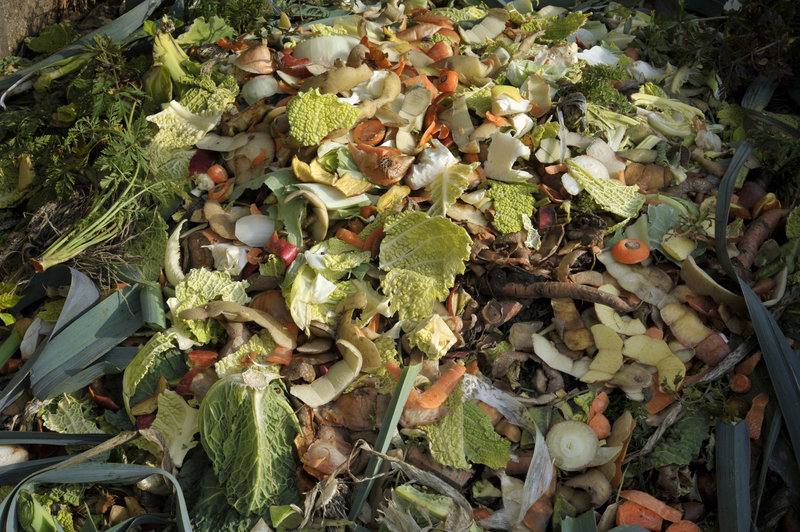The Do's and Don'ts of Pots and Pans Disposal
Have you ever wondered what to do with old cookware that's been taking up precious kitchen space? Disposing of pots and pans presents a unique challenge: they're bulky, often not accepted in your curbside recycling bin, and can sit in landfill for years. This comprehensive guide explores the do's and don'ts of pots and pans disposal, offering eco-friendly solutions, safety tips, and clever ways to give your old kitchenware a new life. Whether your pans are stainless steel, aluminum, nonstick, or cast iron, discover the best disposal methods right here!
Why Pots and Pans Disposal Matters
Disposing of old pots and pans responsibly is crucial for the environment. Traditional disposal methods--like throwing them in the trash--increase landfill waste and squander valuable materials that could otherwise be recycled or reused. Proper cookware disposal helps conserve resources, reduce pollution, and support a sustainable lifestyle.
- Environmental Impact: Pots and pans often contain metals and coatings that don't break down easily.
- Sustainability: Recycling or repurposing reduces waste and supports circular economies.
- Health and Safety: Some cookware (especially nonstick) can release hazardous chemicals if not dealt with correctly.

The Do's: Responsible Ways to Get Rid of Old Pots and Pans
1. Donate Usable Items
If your pots and pans are still in good shape, donating cookware is a wonderful way to extend their life and help others in need. Many organizations accept lightly used kitchenware.
- Charity Thrift Stores: Goodwill, Salvation Army, and other thrift stores often take clean, undamaged pots and pans.
- Local Shelters: Homeless and women's shelters may benefit from your donation.
- Community Centers: Some community kitchens or centers accept working cookware for their programs.
Pro tip: Wash and inspect your old cookware before donating. Donation centers will not accept items that are heavily scratched, chipped, or have loose handles.
2. Recycle When Possible
One of the best ways to dispose of old pots and pans is through metal recycling programs. Most pots and pans, including stainless steel, cast iron, and aluminum, are recyclable if you find the right facility.
Here's how to recycle your cookware:- Remove Non-Metal Parts: Take off handles, plastic knobs, or lids made from different materials, as required by some facilities.
- Research Local Scrap Yards: Call your local recycling center or scrap metal yard to verify which types of cookware they accept.
- Special Considerations for Nonstick Pans: If your nonstick pans have a Teflon or ceramic coating, some centers may not accept them. Ask if they require you to remove the coating, or if there's a designated drop-off location.
Tip: Group old metalware together and recycle in bulk, reducing your trips and carbon footprint.
3. Repurpose and Upcycle Creatively
Upcycling pots and pans is a fun, eco-friendly option if you're feeling crafty. Give your old kitchenware a second life in creative and functional ways!
- Planters: Turn worn-out pots and pans into quirky garden planters or herb holders.
- Decorative Bowls: Paint and hang outdated frying pans as wall decor for a rustic touch.
- Storage Solutions: Use them for organizing small tools, sewing accessories, or office supplies.
- Bird Baths or Feeders: Cast iron skillets and large pans can easily become backyard bird baths or feeders.
- Art Projects: Non-functional cookware makes a unique medium for sculpture and craft.
*Repurposing is an excellent environmental choice and adds charm to your space.*
4. Participate in Local Collection Events
Many cities have household goods collection drives or special recycling events a few times a year for items that don't go in regular curbside bins, including cookware.
- Check municipal websites or local social media groups for upcoming events.
- Some events accept a variety of materials: from old pans to electronics and hazardous household waste.
- Bulk drop-offs keep metals out of landfill and support local recycling efforts.
The Don'ts: What to Avoid with Cookware Disposal
1. Don't Toss Pots and Pans in Regular Trash
Throwing old pots and pans in the garbage should always be your last resort. Besides wasting valuable materials, many nonstick and coated pans contain elements that shouldn't end up in landfill.
- Landfill Impact: Metal cookware doesn't biodegrade, and coated pans can leach chemicals.
- Missed Opportunity: Metals are highly recyclable and shouldn't be wasted.
Remember: Seek alternatives before resorting to household trash.
2. Don't Put Cookware in Curbside Recycling Bins (Without Checking)
Most municipal recycling programs do not accept pots and pans in standard blue bins for several reasons:
- Size & Weight: They can damage sorting machines at recycling plants.
- Material Mix: Some cookware features mixed materials or coatings that require special handling.
- Nonstick Dangers: Pans with Teflon or similar coatings may contaminate recycling streams.
Call your local recycling provider and ask for guidance before adding cookware to your curbside bin.
3. Don't Burn or Incinerate Nonstick Coated Pans
Burning or incinerating any cookware with a nonstick surface is not only dangerous, but potentially toxic. Many older nonstick surfaces release harmful fumes when heated to extreme temperatures.
- Toxic Fumes: Overheated Teflon can generate perfluorooctanoic acid (PFOA), linked to health hazards.
- Legal Issues: Local laws may prohibit open burning of household items.
*Never use fire to dispose of cookware--stick to approved recycling and reuse methods.*
4. Don't Give Away Damaged or Unsafe Pots and Pans
While donating is great, giving away cookware that's cracked, heavily scratched, or unsafe can pose risks to the next user.
- Peeling nonstick coatings are a health risk.
- Dented or warped pans cook unevenly and may be unsafe to use.
- Loose handles can cause accidents.
Always inspect and clean items before donating or rehoming.
Special Considerations for Cookware Materials
1. Stainless Steel
Stainless steel is one of the most recyclable metals. Most scrap yards and metal recycling facilities accept stainless steel cookware regardless of condition, as long as non-metal parts are removed.
2. Aluminum Pots and Pans
Aluminum is highly sought after by recyclers due to its value and sustainability. Remove plastics or silicone parts, then take aluminum cookware to a scrapyard or recycling center.
3. Cast Iron Cookware
Heavy and durable, cast iron pans are perfect for recycling, donation, or upcycling. Many enthusiasts will even restore vintage cast iron. If dropping off for recycling, be sure the pans are clean and free of food residue.
4. Nonstick & Ceramic Coated Pans
Disposing of nonstick pans is more complex due to chemical coatings. Not all recycling centers take these, so look for specialized programs or inquire if your local facility has the capability to handle them. As a last resort, search for manufacturers with "take-back" recycling programs.
5. Copper Cookware
Copper is valuable but sometimes difficult to recycle without specialist facilities. Remove any lining or non-copper components, and contact local scrap dealers.

FAQs About Pots and Pans Disposal
1. Can I put damaged pots and pans in my curbside recycling?
Most municipal programs don't accept pots and pans via curbside recycling due to their size, mixed materials, and specialized processing needs. Take them directly to a scrap metal dealer or local recycling center.
2. How do I know if a recycling center will accept my old cookware?
Contact the center directly or check their published accepted items list online. They may have guidelines for removing non-metal parts or preparing your disposal items.
3. Why can't I just throw cookware in the trash?
Because metals don't break down in landfill, and nonstick coatings can release toxic chemicals. Recycling or reusing is always a better, greener choice.
4. Are there any cookware take-back programs?
Yes! Some cookware manufacturers offer take-back and recycling initiatives for their products. For example, certain brands have drop-off bins or mail-in programs for nonstick pans. Check your pan's brand website.
Conclusion: Make the Right Choice for Pots and Pans Disposal
In summary, being mindful of your pots and pans disposal makes you part of a global solution to reduce household waste and conserve resources. Donate, recycle, upcycle, or find a collection event--but always try to avoid the landfill. Follow the do's and don'ts outlined here to ensure you're disposing of your cookware in the most responsible and sustainable way. Not only will you help protect the planet, but you'll also discover creative ways to repurpose your old kitchen items.
- Do: Research recycling programs, donate, repurpose, and participate in local drives.
- Don't: Toss cookware in regular bins, burn nonstick pans, or give away unsafe items.
For more green living tips and kitchen organization advice, stay tuned to our blog!
